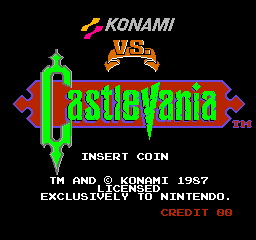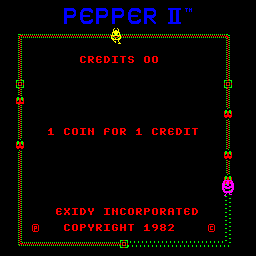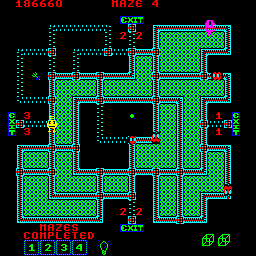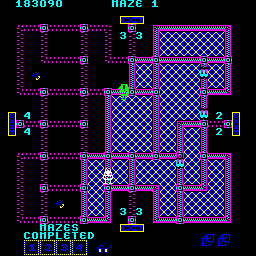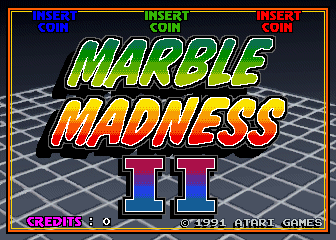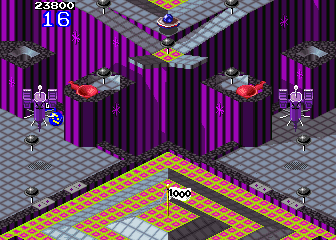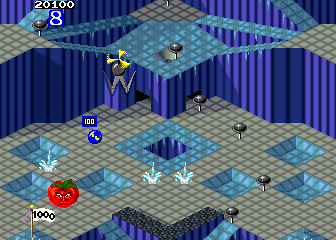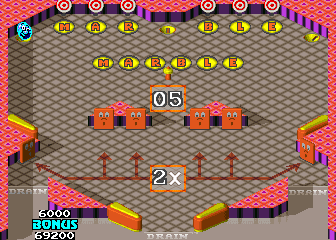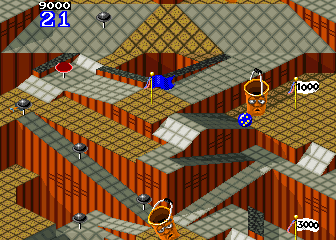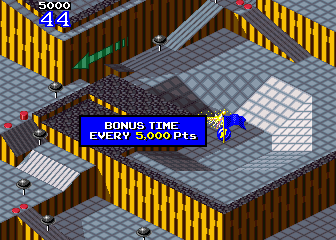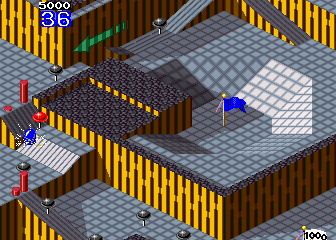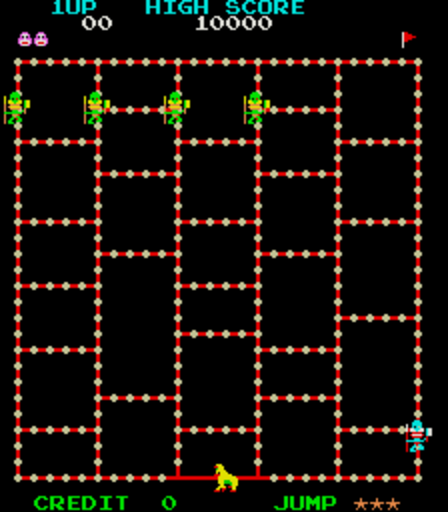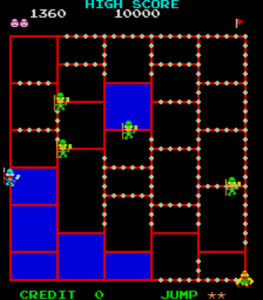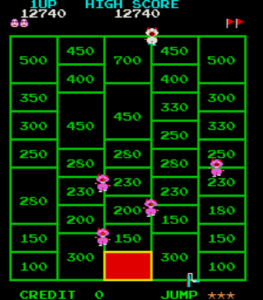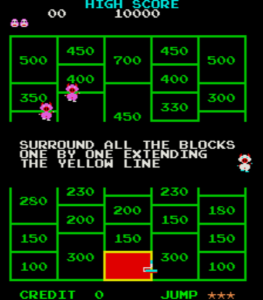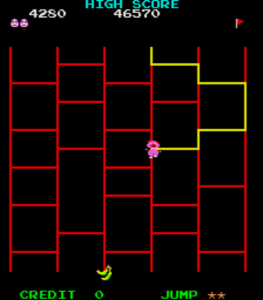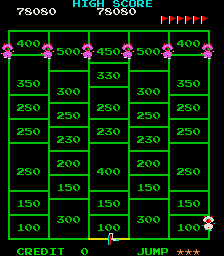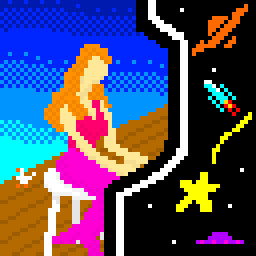
Arcade Mermaid is our classic arcade weirdness and obscurity column! Frequently (no promises) we aim to bring you an interesting and odd arcade game to wonder at.
It’s been awhile since the Merm has brought us something weird and fun to look at, and wow, this one’s really weird.
To get us started, you are free to interpret this as either a warning, a promise, or a money-back guarantee, but you should know going in that this is a journey that ends with this upstanding member of the community right here:

They’re a stunner, aren’t they? And they live for the great taste of robots. But let’s start from the beginning.

Hole Land is a shooter, and apparently the only game made by the Spanish company Tecfri. Wikipedia tells us it was only released in Japan, possibly because it came out in 1984, and the arcade scene in the US was falling apart.
Consider for a moment the concept. Hole Land. Land of Holes. Certainly a theme that bears contemplation. It seems that you are an invader to this land, a gaily-colored robot that runs back and forth across the bottom of the screen, that shoots upward at a horde of adorably, and understandably, angry monsters of various sorts, in order to claim it away for things that aren’t monsters, or holes.
The land itself is against you: volcanoes in the background launch rocks at your droid with suspicious accuracy, and the monsters throw bombs down at it. Getting hit by projectiles doesn’t destroy your ‘bot, it just disables it for a few seconds. A little guy runs on-screen to fix your problem and allow you to resume blasting after a short delay. If a rock hits you, it smashes your head down into your torso, and you have to push the fire button rapidly to decrush yourself.
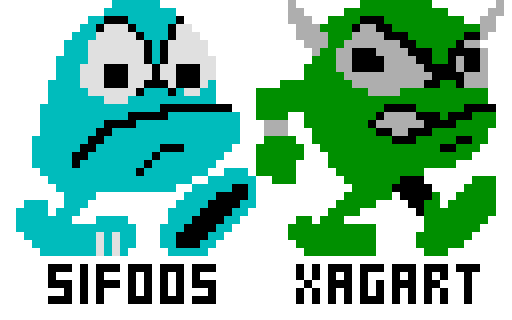
The game consists of three boards, that cycle. In board one, the monsters (called “Silfoos”es and “Xagart”s) all run down from the top of the screen. Because it’s a classic-era arcade game, they have a odd system to their attack: They wind their way down in a curious way, akin to the Centipede, moving all the way to one side, dropping a levels, then taking another horizontal pass.
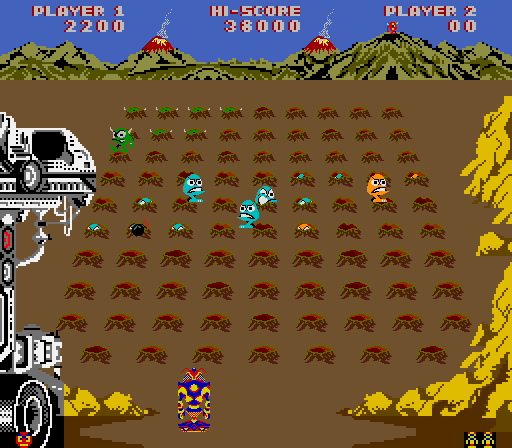
This gives you many opportunities to shoot them, but they’re a little cleverer than the standard video game oppono-target: they duck into the holes repeatedly as they pass, and your shots will miss if they’re in a hole, which is often. They’re also smart enough to stay in a hole if you keep shooting at it while it’s hidden. While they make a horizontal trip across the grid, if you hit the lead monster of a line, it causes the others to reverse direction, which may be good or bad depending on how far they’ve gotten. Unless the wave is almost over: then they progress to the bottom of the grid for a pass, then, as if dissatisfied that you haven’t killed them yet, sprint across one more time without even bothering with the holes.
If, after so many opportunities, you still haven’t fried one of them, it’ll take a run across the screen on your level. Your robot is blessed with the power of jumping, and you must leap over it to avoid losing a life.

The problems though are: you’re probably focused on shooting at its associates still falling, or dodging the bombs they throw or rocks from the volcanoes from the top of the screen, or if you’ve been hit you might not be able to jump it. If multiple monsters made it through it might not even be possible to leap over them all. If you don’t make it over a monster, it knocks the robot’s bottom half off, a type of damage your mechanical assistant seems unable to repair, so scratch one life. Helpfully, if you’ve already made it far into the wave when that happens, the game will advance you to the next level as a consolation.
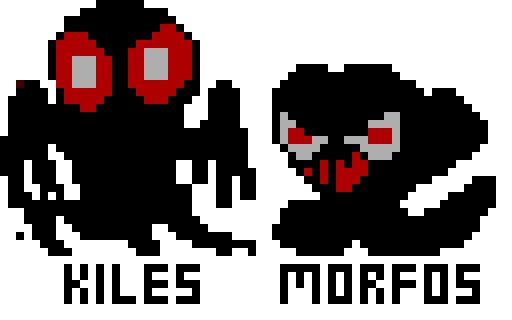
Those bombs and rocks, from the monsters and volcanoes, are your biggest problems. They fall down with great speed, and bounce around too, and if one hits you when the monsters are low enough on the screen the chances are slim you’ll get repaired before one of them uses your lower half as a kickball. Despite all the chances that the monsters give you to shoot them, Hole Land is a dangerous place, and it took several tries for me to get through even the first three screens.
The second board is similar to the first. The monsters are “Kiles” and “Morfos” for some reason. The screen is a lot darker, making it harder to see the monsters and the bombs that fall down.

But then comes the third board, where the game changes up a lot. Now the grid of holes is gone, replaced by a few scattered openings, but dominated by a big imposing crater at the top of the screen. There’s some more new monsters, “Microons,” and some unnamed colleagues that I assume are also Microonian. They don’t hide in the holes, but instead parade around the screen in Galaga-like patterns, giving you a good chance to plug them as they pass by.
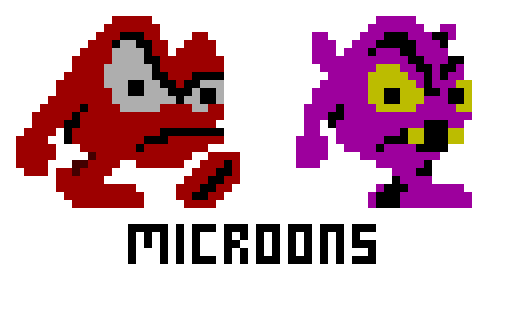
Sometimes they run straight down at you on their last pass, to try to overwhelm your gun before you can incinerate their monsterly asses.
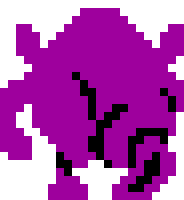
On this level there are also little rat creatures that hide in the holes, waiting for the end of the level where the run in from the wings for their one pass at tearing up your droid. And there are spiders that hang down from threads, that can’t be shot, and will hold your robot in place for a few seconds if they touch you.
But all this is just in preparation for the main event: their boss.
In 1984 boss monsters were not yet in vogue, yet Hole Land certainly has a memorable one.
It’s not named in the game’s intro. I have put some effort into trying to come up with a suitable name. I thought of Testicules, rhymes with Hercules, but it looks like it’d be pronounced like “molecules.” Gonad Man is a possibility, but it’s obviously not a man; it may not even be male, technically, but Gonad Person doesn’t have the same ring. Scrotor has already been used by Mystery Science Theater 3000. As a brainstorming exercise, and for your own entertainment, I invite you to come up with your own name for this globular goblin.
Whatever its name, once it has emerged from its Hole, the fight is on. It advances straight down, slowly. Your job is to shoot out its jagged, pointy teeth, one by one. It feels like it takes multiple hits each, but in fact each tooth takes only one shot. It just has to hit it dead on; shots that don’t strike a tooth right in its middle have no effect. You also must knock out all of its lower teeth, every one, before any hits to upper teeth will register.
While you’re blasting away, it’s ominously stomping its way down towards you, KA-WUMP KA-WUMP, following your movements with its bloodshot eyes, and throwing rocks from its hands. It’s aim isn’t good, it can only really throw straight down or at specific angles to the left and right, but it can throw from either hand, and as it gets menacingly closer its rocks get harder to avoid. Hits don’t damage or destroy your robot, but they do knock it away, making you have to scramble back over to get in more shots, but likely getting back just in time to be hit by the next rock.
If it gets all the way down, it stomps to the side to catch your robot, then it eats it, its hands working with the effort of crunching it to bits:
But the best part is if you succeed in shooting out all of its teeth. While your robot jumps around in inane joy, your now toothless foe sits, defeated and sad. While it might be a grotesque testicle monster from out of a giant hole in the ground, it’s gracious in failure and acknowledges your accomplishment, with a synthesized voice no less. Civility is not dead in Hole Land!
Here is my playthrough, if you’re curious what this all looks like in action:
Better yet, you could have a look at this video from classic gaming Youtuber Zerst, who hosts plays of lots of obscure and bizarre old arcade games and whose channel was where I first found out about it, and who made it through all five difficulty levels. There is no ending other than the Congratulations screen at the end of each level; it probably cycles endlessly from there.
I don’t know if I could add much more about it than this. It’s very hard, it’s difficult knocking out all of the boss monster’s teeth before it eats you, and on later levels the volcanoes’ rock deluge is incessant. But they really don’t make them like this any more. The time window for the making of this kind of crazy arcade game was pitifully short. Even relatively simple games take so much time and person-power to construct that, unless one’s just doing it as a hobby, willfully chasing bizarre concepts will probably turn away most of the gaming public, and that’s a shame.
Well, that’s all on this one. I bid you all a fond farewell, coming from the Land of Holes!

